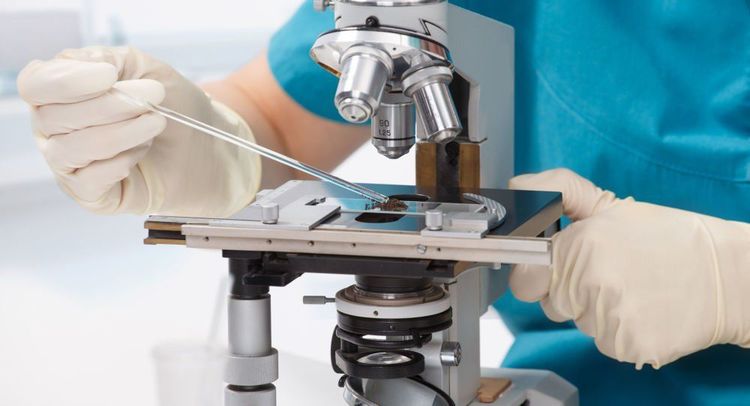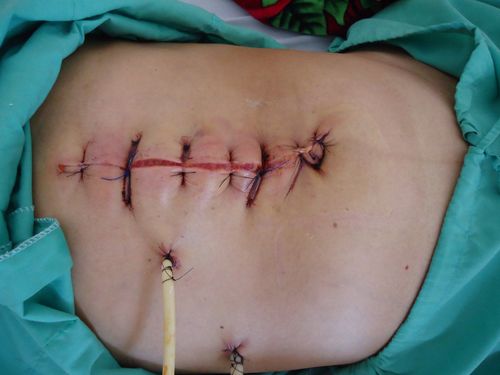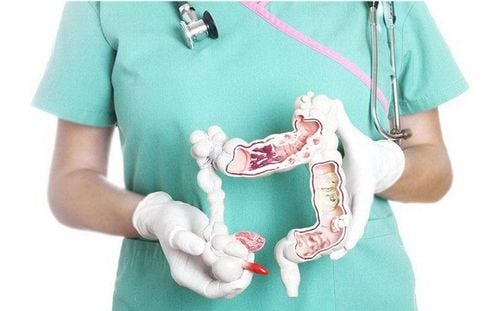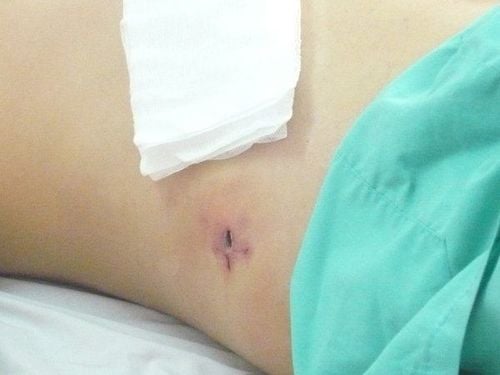This is an automatically translated article.
Microsurgery is a very small and sophisticated surgical technique for complex structures in the body. By using microscopes, specialized tools and sharp eyes, skillful hands, microsurgery has helped to reconstruct not only a part or organ but also a meaningful life of many people. many patients.
1. What is microsurgery?
Microsurgery is a surgical term that uses specialized microscopes and sophisticated precision instruments to repair small and complex structures such as blood vessels and nerves. only a few millimeters in diameter. This field of surgery has a huge role to play in restoring body parts damaged by trauma, trauma, cancer and birth defects.
The history of microsurgery began when the microscope was first introduced and used to examine vascular lesions. By the 1960s, microsurgery techniques had become more common, and in 1964 a rabbit ear was replaced on a live rabbit by microsurgery. This is a turning point that resonates greatly when the blood vessels involved in the procedure are only about 0.1 cm small. After two years, a monkey had surgery to attach a toe to its hand, demonstrating once again the value of microsurgery to modern medicine. Today, the successes of microsurgery are further reinforced by the achievements in autologous tissue grafting as well as becoming a very important procedure in plastic surgery.

Kính hiển vi được sử dụng trong vi phẫu
2. When to use microsurgery?
Microsurgery has been applied in the following cases:
Head - face - neck reconstruction using autologous tissue transfer Breast parenchymal reconstruction using autologous tissue transfer Autologous muscle transfer for some patients type of muscle paralysis Capillary switching Complex wound reconstruction Finger or foot transplant Nerve and blood vessel repair or graft Lymphatic system reconstruction
3. What are the possible risks of microsurgery?
Before proceeding, surgeons will always explain in detail the risks associated with surgery. Accordingly, only when the patient and their relatives understand and agree, the surgery can be carried out.
Similar to other surgical interventions, even if the intervention is at a very small level, microsurgical techniques can still contain the following risks:
Incisional bleeding Hematoma inside the wound Infection Incision healing of keloids or stretch marks Complications of anesthesia Edema Loss of skin or tissue necrosis Numbness or change in skin sensation Skin discoloration Persistent pain swelling Blistering skin Fat necrosis Deep vein thrombosis, complications Heart and lungs Disproportionately limited cosmetic effect Inability to have corrective surgery Persistent pain All these and other rare risks are always discussed in full, frankly before patient consent surgery. It is important that patients and family members have the courage to ask questions directly to the surgeon to understand all issues before making a decision.
4. How to prepare for microsurgery?
The preparation steps for microsurgery are similar to those of conventional surgery. In which, the patient is always required to follow the following steps in turn:
General examination and assessment of tolerance for surgery Do general tests and preoperative tests Do evaluation tests organ function and structure prepare for intervention Consider or adjust current medications Quit smoking Avoid aspirin, anti-inflammatory drugs, and herbal supplements as they can increase bleeding

Hãy từ bỏ thuốc lá khi thực hiện vi phẫu
5. What is the microsurgery process like?
Step 1: Anesthesia:
Due to the meticulousness, precision and often very long surgery time, all patients are under general anesthesia and mechanical ventilation through endotracheal tube throughout the surgery. art.
Step 2: Incision
The transfer of autologous or donor tissue into the patient's body needs to be planned in detail step by step before. After the patient is completely anesthetized, the area of tissue that needs to be replaced will be removed, excised, infected, necrotic or crushed. The bundles of blood vessels and nerves, including tendons and muscles, are also prepared to connect to the new graft. For the selected graft, the doctor will thoroughly disinfect the entire surgical field and carefully remove the graft, minimizing the number of incisions. Small blood vessels and nerves are also carefully dissected for delivery to the graft site. Here, the vascular section needs to be quickly connected and clamped, re-establishing tissue perfusion. Turn to the next sections. This whole process takes place under a microscope and uses a needle, which is only extremely small in size, and also requires sophisticated and precise manipulations of the surgeons.
Step 3: Close the incision
Depending on the condition of the graft and the function of the operation, the incision will be closed with sutures to be removed, soluble sutures or bio-adhesive materials.
Step 4: Evaluate the results
The results of microsurgery will improve over time as the swelling on the wound subsides. The results of microsurgery will be achieved, sometimes it takes a very long time, up to several months.
6. How to take care during microsurgery recovery?
After finishing microsurgery, the wound will be covered with a bandage until the incision is completely healed. Sometimes elastic bandages or compression clothing can help reduce swelling as well as aid in the recovery of organ function.
Closely monitor blood flow after microsurgery, preferably in a hospital setting with a team of experienced specialists. Early detection of hypoperfusion or embolism through external signs.
Small, thin tubes may be temporarily placed under the skin to drain the hematoma or inflammatory fluid. Care for these drains daily with an antiseptic solution to avoid the risk of infection upstream.
Limit certain activities in the surgical area to help the wound heal quickly. However, when the incision improves, it is necessary to exercise early to restore function.
In short, thanks to microsurgery techniques, surgical specialties have made great strides in reconstructing the structure and function of body parts. Not only that, microsurgery also contributes to the aesthetics of complex lesions.
To register for examination and treatment at Vinmec International General Hospital, you can contact Vinmec Health System nationwide, or register online HERE
Reference sources: plasticsurgery.org, emedicine .medscape.com, docdoc.com.sg
SEE MORE
Vinmec uses the latest US-made robot - Da Vinci Robot Learn about robotic laparoscopic surgery Why does robotic surgery have many advantages over classical open and laparoscopic surgery?













